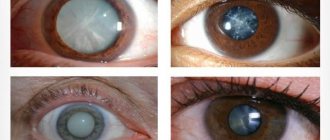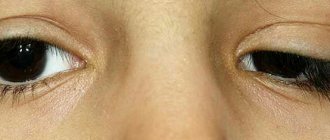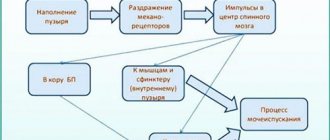Article:
Apraxia in speech therapy is a movement disorder that involves problems with the pronunciation of sounds, syllables and words.
The defect is not caused by muscle weakness or paralysis, but by pathological dysfunction of the brain. The child wants to pronounce a phrase, but the movements of his articulatory muscles are not coordinated.
Apraxia is distributed on a large scale throughout the world. Every year the percentage of children suffering from this diagnosis doubles. Approximately 10:1000, this number of patients are registered with apraxia.
Etiology, risk factors
Manifestations of apraxia are associated with damage to the parietal, frontal lobes of the cerebral cortex, and corpus callosum. The following pathologies can provoke this condition:
- dementia arising from chronic lack of blood circulation;
- traumatic brain injuries;
- encephalitis;
- Alzheimer's disease;
- brain tumors;
- Parkinson's disease.
If you have one of the diseases described above, you need to regularly monitor your health over time.
Clinical picture
The disease is characterized by a number of signs at different ages; the diagnosis is made after a comprehensive examination. The main symptoms of apraxia in children:
- lack of babbling;
- the child begins to speak late;
- limited reproduction of sounds with difficulty connecting them;
- replacing phonemes or omitting difficult ones to pronounce.
After the speech formation period, errors in sequence may occur less frequently. Imitation is difficult for a child, but in this case it is easier to understand him. Short phrases are easier for him. As with stuttering, anxiety makes communication difficult. As a result, a complex of deviations leads to delayed language development, memory impairment, and difficulties with fine motor skills. Other problems include oral sensitivity, which may cause your child to not like brushing their teeth or chewing crunchy foods. Apraxia also leads to difficulties in mastering written grammar and poor reading.
Despite the initial absence of problems with mental development, children subsequently become aggressive and negative mental changes are noted.
In speech therapy, this term is used in relation to aphasia, cortical dysarthria, and motor alalia. The deviation may be general in nature, affecting only oral, articulatory or spatial characteristics.
General apraxia is characterized by the inability to coordinate hand movements and, as a result, the inability to use objects for their functional purposes. In the oral form of the pathology, the muscles innervating the speech organs do not move. Apraxia of speech is manifested by incorrect reproduction of sounds: there are various errors in their pronunciation and problems with phonemic perception. In the monotype, apraxia is rare; it is characterized by a mixture of manifestations.
Differences in the course of pathology in adults and children
The child makes more mistakes when speaking, but the neurological symptoms are not clearly expressed. At the same time, the causes of apraxia in older people are injuries and brain tumors, circulatory disorders, which casts doubt on the diagnosis itself. If we are talking about a congenital pathology, doctors assume its hereditary nature, and a theory is developed about an anomaly in chromosomes and a violation of metabolic processes.
Apraxia of speech is considered a motor speech disorder. What other symptoms should you pay attention to? Patients with apraxia have a stiff gait and small steps; it is difficult for them to perform ordinary daily activities: getting dressed, making the bed, combing their hair, etc. This is not necessarily a feature of apraxia, but consultation with specialists is necessary.
Classification of apraxia by type of reaction to internal and external stimuli (A. R. Luria):
- kinesthetic form - lack of connection between body position and movement; for example, due to the fact that the patient does not feel the position of his fingers, he cannot show how to pour tea;
- kinetic is the absence of automation of actions, pauses occur, human movements are angular;
- the spatial view is associated with a violation of orientation, its subtype is constructive;
- the regulatory form consists of unconscious, uncontrolled actions; it is difficult for a person to coordinate them.
Psychoneurologist G. Lipmann also distinguished ideomotor and ideational forms of apraxia. With the ideomotor type, the patient understands what needs to be done, but skips some actions or does not complete the process. The ideational type is more often found in combination with the regulatory one and is characterized by the fact that a person cannot remember the meaning of performing an action, and subsequently does not control the correctness of his actions. Ideational apraxia differs from ideomotor apraxia in that the patient retains the ability to imitate, which greatly facilitates communication.
Separately, speech therapy deals with eyelid apraxia, the symptoms of which are difficulty opening and closing the eyes. There is no infectious cause for this condition, blepharospasm or damage to the facial nerve. The pathology manifests itself in a one-sided way: it is difficult to open or close the eyelids. As a rule, complications are associated specifically with opening the eyes, so the patient has to wrinkle his forehead, throw back his head, or pull up part of the eyelid with his fingers.
APRAXIA
Rice.
1. Localization of lesions of the cerebral cortex that cause apraxia (according to Lipmann): 1 - acrokinetic (motor) apraxia; 2 - ideokinetic apraxia; 3 - ideational apraxia. APRAXIA
(Greek
apraxia
inaction) - a violation of complex forms of voluntary (and, above all, purposeful) action while maintaining elementary strength, accuracy and coordination of movements, which occurs with focal lesions of the cerebral cortex. The phenomena of apraxia were first described by Lipmann (H. Lipmann, 1900), who defined apraxia as the inability to carry out an appropriate movement in the absence of paresis, ataxia or impaired muscle tone. Lipmann associated apraxia with damage to the parietal and inferior parietal areas of the cerebral cortex (Fig. 1) and distinguished motor (acrokinetic) apraxia, in which the patient clearly imagines the movements that he must perform, but does not find motor pathways for its implementation; ideational apraxia, in which the patient does not imagine what movement he should perform, and ideokinetic apraxia, which occupies an intermediate place. A special form of apraxia, described by Lipmann (1905), is apraxia of the left hand, which occurs as a result of disturbances in the pathways of the corpus callosum, as a result of which the nerve impulse that formulates the task of movement does not reach the inferior parietal parts of the right hemisphere. This leads to difficulty in performing the desired movement with the left hand while maintaining the ability to perform movements with the right hand.
Further development of the doctrine of apraxia was associated with the works of Sittig (O. Sittig, 1931), Kleist (K. Kleist, 1934) and Denny-Brown (1952, 1958). The most significant advances in the study of apraxia were achieved by Soviet neurologists, who tried to approach the phenomena of aproxia from the point of view of the general mechanisms of the motor act, studied in detail by N. A. Bernstein (1947), and the general psychological doctrine of the structure of human activity (L. S. Vygotsky , 1956, 1960; A. N. Leontiev, 1957, etc.).
According to modern concepts, apraxia differs sharply from such forms of movement disorders as paresis, ataxia, dystonia, and occurs in cases where one of the components necessary for the implementation of complex voluntary movement is impaired. According to the localization of the lesion in the cerebral cortex, various mechanisms underlying complex voluntary movement may be disrupted, and apraxia may take different forms.
Afferent (kinesthetic) apraxia
is manifested by a violation of the kinesthetic foundations of movement, that is, a violation of the sensations of the position or direction of movement of one or another part of the body, especially the hands, without which the clear addressing of motor impulses loses its definiteness, and the movement becomes uncontrollable. This form of apraxia, close to the acrokinetic and ideokinetic apraxia of Lipmann, is expressed in the inability to find the desired movement based on kinesthetic sensations, and the patient can make this movement only under constant visual control. With afferent apraxia, damage to the postcentral parts of the cortex of the dominant hemisphere (left in right-handed people) is noted.
Oral apraxia
represents a special type of apraxia of the speech apparatus, in which difficulties in motor speech develop, taking the form of afferent (kinesthetic) motor aphasia (see).
The patient cannot find the positions of the speech apparatus necessary for pronouncing the corresponding sounds - the articulum, and a syndrome is formed, which includes a mixture of sounds that are similar in articulation in expressive speech, peculiar writing disorders, etc. The lesion in oral apraxia is localized in the lower parts of the postcentral ( kinesthetic) parts of the cortex of the dominant hemisphere (left in right-handed people). Rice.
2. Impaired movements when writing letters in a patient with spatial apraxia as a result of injury to the left parieto-occipital region. The first and third rows are font samples, the second and fourth rows are how the patient writes these letters. Spatial apraxia
manifests itself as a violation of the patient’s orientation in spatial directions, primarily in the right-left direction.
The patient cannot draw an image oriented in space, cannot get to the desired point in space, or construct a figure from matches or construct some kind of spatial diagram (constructive apraxia). When writing, the patient makes spatial errors, being unable to correctly correlate parts of complexly constructed letters and showing signs of mirror writing, and the entire system of movements is disrupted in a pronounced spatial manner (Fig. 2). The described disorders occur with lesions in the parieto-occipital regions of the cerebral cortex. Rice.
3. Impaired movements when drawing and writing in a patient with kinetic apraxia as a result of damage to the left premotor area. “122”, “101”, “Circle”, “Square” - the task proposed for writing and sketching (at the top is its execution). At the bottom of the picture is a sample of the patient’s handwriting when writing a letter (repetitions of letters are underlined). Kinetic or efferent apraxia
is expressed in the fact that the finding of the necessary movements and their spatial organization remain intact, but a smooth transition from one link of a complex movement to the next turns out to be inaccessible. Motor skills disintegrate, each element of a complex motor skill requires a special impulse, and the smoothness of writing is disrupted. Similar disorders occur with damage to the premotor parts of the cerebral cortex, predominantly the dominant hemisphere (left in right-handed people). As is known from a number of studies, in particular Fulton (F. Fulton, 1935), the premotor parts of the cerebral cortex are in close connection with the subcortical nuclei and are directly involved in the processes of automating complex voluntary movements and in the formation of smooth motor skills. Efferent apraxia is characterized by pathological inertia of movements and motor perseverations (repetition of the same movements), which the patient is aware of, but cannot voluntarily delay. Similar defects often appear in writing (Fig. 3). In this form of apraxia, the lesion is located in the deep parts of the premotor areas and leads to disruption of the normal connections of the premotor area with the subcortical nuclei.
This form of apraxia can manifest itself in a violation of speech processes, which leads to efferent (kinetic) aphasia (see). The patient, who easily finds the desired articulation, is unable to easily switch from one articulation to another, and pronouncing a whole word, and even more so a whole phrase, becomes inaccessible. This occurs when the lower parts of the premotor zone of the dominant hemisphere (left in right-handed people) - Broca's area - are damaged.
Frontal apraxia.
With frontal apraxia, a peculiar type of disturbance of voluntary movements and actions is noted. In these cases, both the kinesthetic and spatial and kinetic organization of movements may remain intact, but the patient experiences gross disturbances in the subordination of all movements to a known intention, the programming of complex, sequential motor acts and control over his voluntary movements are disrupted. As a result of this, complex movements that obey the instructions given to the patient or his own plan lose their purposeful nature and are replaced either by movements that repeat the movements of the doctor (echopraxia), or by inert stereotypes that arise, which the patient does not notice and does not correct. The lesion is found in the frontal (prefrontal) parts of the brain, which indicates the role of the frontal lobes in organizing complex meaningful motor acts. However, the types of praxis violation described above remain the same in these cases. The only exceptions are pure forms of ideatorial apraxia, in which the patient loses the ability to imagine the desired movement, but it is possible that these relatively rare cases are based on the unequal factors already described above.
Methods for studying apraxia
Until recently, they were not sufficiently developed and boiled down to a proposal to repeat the doctor’s movements, to perform certain actions with real or imaginary objects (for example, to show how to pour tea from a kettle, how to stir tea in a glass, etc.). These methods make it possible to establish the presence of one or another type of apraxia, but do not yet make it possible to identify the factors underlying one or another type of apraxia, and therefore do not provide sufficient grounds for using the symptoms of apraxia for the topical diagnosis of brain damage.
Currently, this gap has been filled by introducing a number of techniques that make it possible to show which defects underlie one or another form of apraxia. Thus, to analyze kinesthetic apraxia (or “postural apraxia”), the patient is asked to reproduce various positions of the fingers according to a model (for example, point out the II and V fingers, fold the fingers into a ring shape); when studying oral apraxia, give the tongue the position of a tube, place it between the teeth and lower lip, whistle, etc. Difficulties in performing this test, accompanied by unsuccessful searches, give grounds for ascertaining kinesthetic apraxia, which allows us to think about damage to certain parts of the postcentral cortex cerebral hemispheres.
To analyze spatial apraxia, the patient is asked to give the straightened palm a horizontal, frontal or sagittal position or to correlate the position of both hands in the corresponding spatial coordinates. Difficulties in performing this test when the previous one is easy to perform give grounds to assume a lesion in the inferior parietal or parieto-occipital region of the cortex. Difficulties in performing Hede’s test—reproducing the positions of the hands of a doctor sitting in front of a patient—are of similar importance; inhibiting the tendency to mirror movements, perform cross movements (for example, touching your left ear with your right hand, etc.)
To analyze kinetic apraxia, the patient is asked to perform a “kinetic melody” assigned to him, which requires a smooth switch from one element of movements to another (for example, tapping rhythms according to a model or speech instructions, or performing a test for reciprocal coordination of movements of both hands simultaneously, folding the fingers of one hand into fist and straightening the fingers of the other hand, repeating this movement many times in a row). Violation of the smooth execution of this “kinetic melody” with getting stuck on one of the links of movement may indicate damage to the premotor areas of the cortex. The presence of gross motor perseverations (the inability to stop a movement in time and its inert repetition in the form of violent movements) may indicate the involvement of deep parts of the premotor zone and subcortical motor nuclei in the pathological process.
To analyze the phenomena of frontal apraxia, the patient is placed in conditions under which he is asked to perform a conditioned action that does not correspond to a visual signal (for example, in response to a raised fist, raise a finger and lower it), or he develops a conditioned action that requires a rhythmic pattern of responses (for example, , in response to one knock, raise your right hand, in response to two knocks, raise your left hand); this test is repeated several times in a row with rhythmic alternation, and then this rhythmic order is disrupted. The tendency to replace a conditioned (corresponding to instructions) action with an imitative one or the tendency to reproduce an inert stereotype, regardless of the signal, is a sign of a violation of the regulatory function of the frontal lobes of the brain and, therefore, a symptom of frontal apraxia.
Carrying out the described tests makes it possible to supplement the clinical description of apraxia with a pathophysiological analysis of the factors underlying its various forms, and to differentiate apraxia from both more elementary movement disorders (paresis, ataxia) and from the general inactivity of movements that occur in severe hypertensive-dislocation conditions.
Prognosis and treatment.
The prognosis is determined by the nature of the disease in which aproxia occurs (in most cases these are vascular lesions of the brain, mainly softening of certain parts of the cerebral cortex, less often tumors, injuries, inflammatory and degenerative processes). Treatment of the underlying disease is carried out, as well as special activities - classes with the patient aimed at improving voluntary movements.
Bibliography:
Bernshtein N. A. On the construction of movements, M., 1947; Luria A. R. Higher human cortical functions and their disorders in local brain lesions, M., 1969, bibliogr.; aka, Fundamentals of Neuropsychology, M., 1973; Tonkonogiy I. M. Introduction to clinical neuropsychology, p. 106, L., 1973; De AJuriaguerra J. a. Tissot R. The apraxias, Handb. clin. neurol., ed. by PJ Vinken a. G. W. Bruyn, v. 4, p. 48, Amsterdam - NY, 1969, bibliogr.; Lange J. Agnosien und Apraxien, Handb. Neurol., hrsg. v. O. Bum-ke u. O. Foerster, Bd 6, S. 807, B., 1936, Bibliogr.; Warrington EK Constructional apraxia, Handb. clin. neurol., ed. by PJ Vinken a. G. W. Bruyn, v. 4, p. 67, Amsterdam -NY, 1969, bibliogr.
AP Luria.
Diagnosis of the pathological condition
Who diagnoses the disease? To assess speech development, an audiologist is involved, who must assess the condition of the hearing organs and exclude this factor as the cause of the disorder. The speech therapist checks the characteristics of oral speech, motor skills, and melody. Oral-motor assessment criteria:
- checking the muscle tone of the speech apparatus;
- development of coordination;
- orderliness of muscle movements.
The specialist observes the patient while performing speech therapy tasks and in functional situations. The test of melody lies in the ability to change intonation and pauses. An important criterion for speech development is the patient’s ability to conduct a dialogue, to the extent that what he says is understandable to others.
Making a diagnosis begins with studying the medical history and analyzing the patient’s complaints. Primary attention is paid to the articulation of the eyelids, the ability to perform simple everyday actions (for example, unfastening and fastening buttons). Already visually, a specialist can guess the specifics of the disorder. Apraxia is confirmed instrumentally after hardware diagnostics of the brain.
Principles of treatment
For therapy to be successful, classes should take place up to 3-5 times a week. Individual lessons are preferable to group exercises, especially at the initial stage. Subsequently, subject to positive dynamics, tactics can be changed. Parents of a child with apraxia must be patient and actively participate in the development program. A favorable family environment facilitates the treatment process.
Therapy for apraxia should begin with eliminating the cause of the pathology, that is, treating the underlying disease.
In addition to taking medications according to an individual regimen for each patient, physiotherapeutic methods help improve the quality of life. If we are talking about the oral form, classes with a speech therapist are necessary. The prognosis is favorable, of course, subject to systematic treatment and exercise. Close relatives should be patient with the manifestations of the disease and the patient’s lifestyle, and help him in everyday life.
There are no special recommendations for preventing the disease. They are common. This includes a healthy lifestyle, a balanced and rational diet, and timely examination by a doctor in the presence of complaints and chronic infections. In case of health problems due to vascular problems, it is necessary to monitor blood pressure levels.
Treatment of apraxia
For reference. Treatment consists of correcting the underlying disease that led to the development of apraxia (Pick's disease, Alzheimer's, Parkinson's disease, stroke, brain abscess).
Drug therapy for apraxia includes the following:
- drugs that improve cerebral hemodynamics (vasodilators, thrombolytics, drugs that improve microcirculation can be used);
- neuroprotectors;
- nootropic drugs;
- etiotropic drugs aimed at eliminating the underlying disease.
After elimination or correction of the underlying disease, restorative therapy is prescribed (neuroprotectors and nootropics, physical therapy, massage, physiotherapy).
If necessary, neurosurgical intervention is performed.








